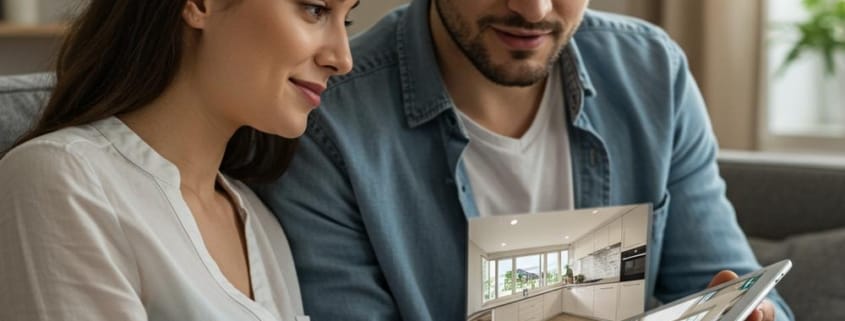How 360° Photography Enhances Customer Engagement
How 360° Photography Enhances Customer Engagement
Introduction
In an increasingly digital world, where online interactions often precede physical ones, businesses are constantly seeking innovative ways to capture and retain customer attention. Traditional static images and basic video, while still valuable, sometimes fall short in conveying the full story of a product, space, or experience. This is where 360° photography emerges as a powerful game-changer. By offering a fully immersive and interactive visual experience, 360° photography transforms passive viewing into active exploration, significantly enhancing customer engagement and fostering deeper connections. It allows viewers to virtually step into a scene, spin a product, or navigate a space, providing a level of detail and control previously unattainable online. This article explores the multifaceted ways in which this revolutionary visual medium elevates customer interaction and drives business success.
Main Body
One of the most immediate benefits of 360° photography is its unparalleled ability to create an immersive experience. Unlike standard flat images, a 360-degree view gives customers the freedom to look in any direction, simulating the act of physically being there. Whether it’s a prospective homebuyer exploring every corner of a property, a car enthusiast inspecting the interior of their dream vehicle, or a shopper examining a product from all angles, this technology bridges the gap between the virtual and the physical. This sense of control and presence makes the online experience far more engaging and memorable, encouraging users to spend more time interacting with the content, thereby reducing bounce rates and increasing the likelihood of conversion.
Beyond immersion, 360° photography builds trust and transparency. In an era where consumers are wary of misleading visuals, providing a complete 360-degree view leaves no room for hidden flaws or selective showcasing. For e-commerce businesses, allowing customers to rotate a product and zoom in on details from every conceivable angle offers a level of confidence that traditional images cannot. This transparency is crucial for high-value items or products where texture, size, and intricate details matter. When customers feel they have a complete understanding of what they are purchasing, their confidence in the brand grows, leading to fewer returns and more satisfied customers. The ability to see every facet of an item, as if holding it in their hands, dramatically improves the shopping experience and reduces buyer’s remorse.
The interactive nature of 360° content also plays a significant role in boosting engagement. Rather than passively scrolling through images, users actively participate in the viewing experience. This interaction not only captures attention but also makes the content more memorable. When customers are given the power to explore at their own pace and focus on what interests them most, they develop a stronger connection with the product or space. For businesses looking for e-commerce visual solutions, this translates into higher conversion rates, as informed and engaged customers are more likely to make a purchase. The novelty and uniqueness of 360° visuals also make them highly shareable on social media, acting as a powerful organic marketing tool that can extend reach and attract new audiences.
The versatility of 360° photography makes it invaluable across a wide range of industries. In real estate, immersive virtual tours have become indispensable, allowing potential buyers to walk through properties remotely, saving time and resources for both agents and clients. Hospitality businesses use them to showcase hotel rooms, event venues, and resort facilities, providing a realistic preview that encourages bookings. The automotive sector leverages 360° views to highlight vehicle interiors and exteriors, enabling customers to explore models in detail before visiting a dealership. Even in the retail sector, particularly for high-end fashion, electronics, or furniture, professional 360 product photography offers an unparalleled way to present items, allowing customers to appreciate craftsmanship and features from every perspective. The key to maximizing these benefits lies in the quality of the visual content. Companies like Artsun specialize in creating the kind of seamless, high-quality visual content that truly captivates audiences and delivers on the promise of immersive engagement.
Furthermore, the integration of 360° images and videos on websites can indirectly contribute to better search engine optimization (SEO). Search engines value user engagement metrics such as time spent on page and reduced bounce rates. Content that is rich, interactive, and compelling naturally encourages users to stay longer and explore more, signaling to search algorithms that the website provides valuable content. This can lead to improved search rankings, driving more organic traffic to the site. Moreover, standing out from competitors with superior visual content can strengthen brand perception and create a lasting impression, further solidifying customer loyalty.
Conclusion
In conclusion, 360° photography is far more than just a visual gimmick; it is a strategic tool for businesses aiming to thrive in the digital age. By offering unparalleled immersion, fostering trust through transparency, and enhancing interactivity, it significantly boosts customer engagement across various sectors. It transforms the online browsing experience from a passive activity into an active exploration, leading to increased time on site, higher conversion rates, and ultimately, stronger brand loyalty. Embracing 360° photography is no longer just an option but a necessity for businesses looking to truly connect with their audience and stand out in a crowded digital marketplace.



